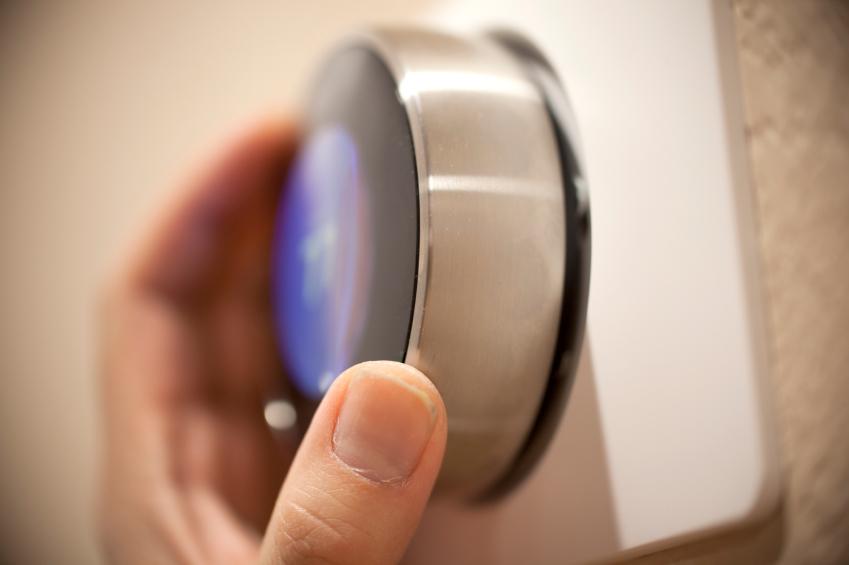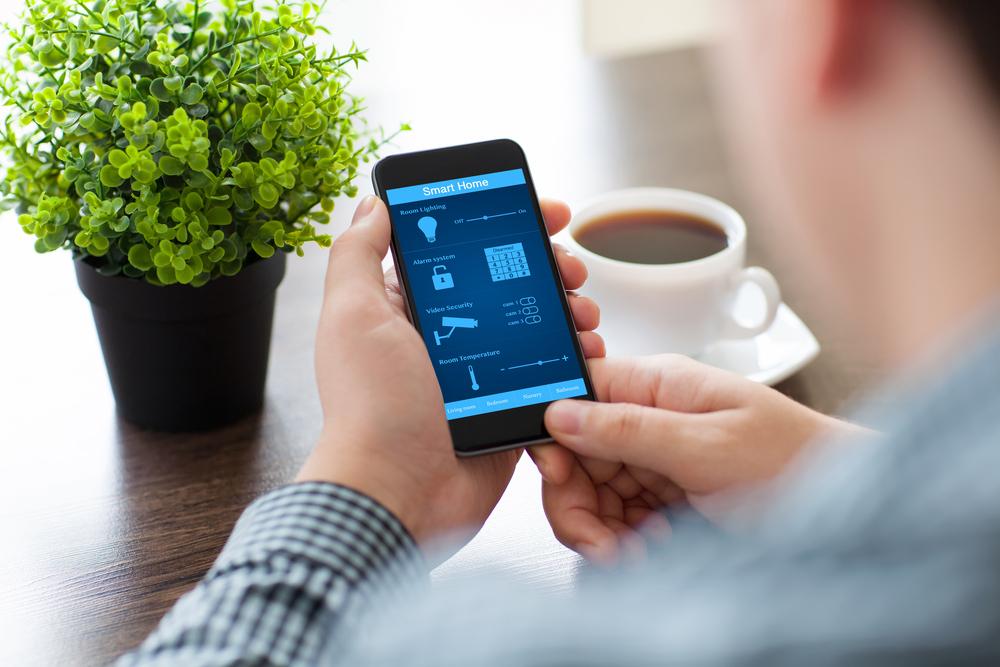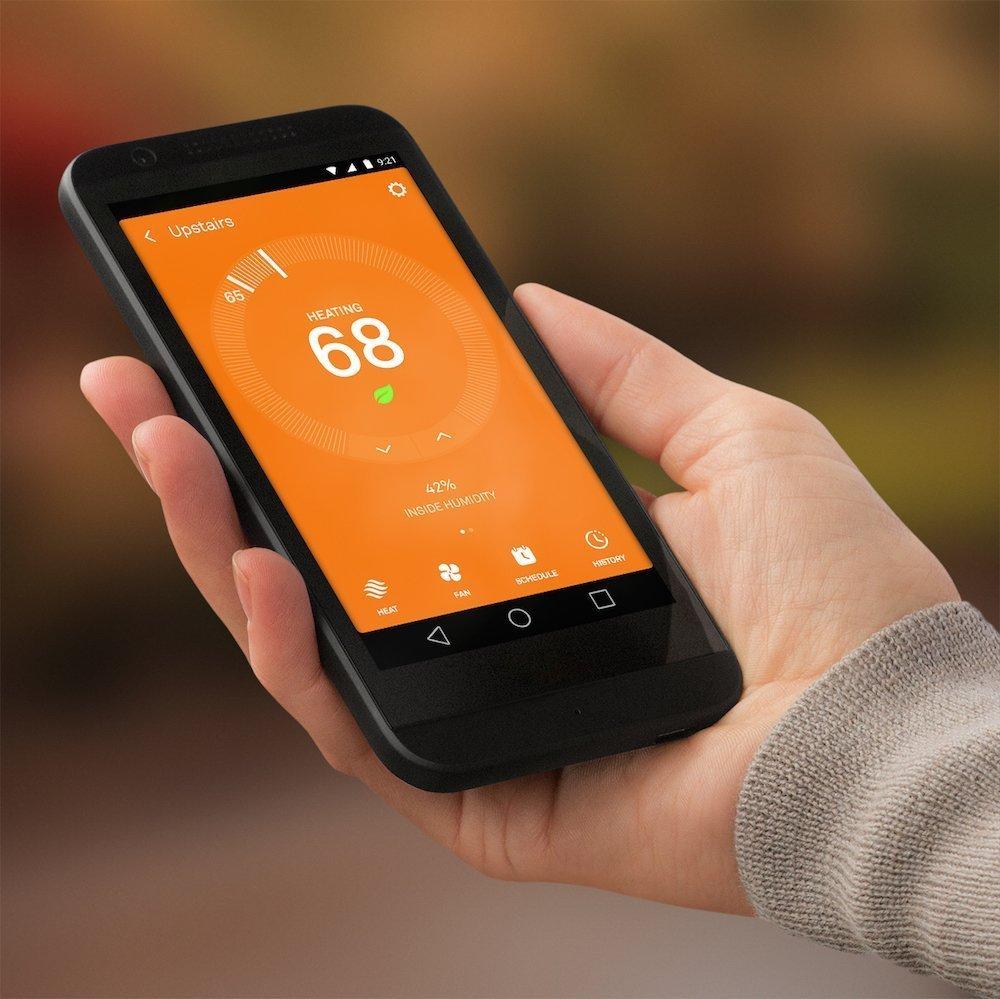Install Smart Thermostat
Imagine, your home is the perfect temperature when you wake up in the morning and come home from work - and you are saving money on your energy bill! One great way to save energy is to turn down the heat or AC when you’re not home or at night while you’re asleep. However, if you’ve ever tried to program your thermostat schedule manually, or tried to remember to turn the heat down when you are leaving for the day, you know it can be a challenge! Smart thermostats fix this problem by making it incredibly easy to heat and cool your home just when you need it. Add in a few settings and then it learns your routine and keeps your home cozy and comfortable. Even better, this saves a lot of energy and money - up to 15% of your home heating and cooling bill. And when you save energy, you also reduce air and climate pollution!
Your Impact
Action Steps & Tips
Introduction

If you've ever tried to program your thermostat schedule manually, or tried to remember to turn the heat down when you are leaving for the day, you know it can be a challenge!
Smart thermostats have solved this problem by making it incredibly easy to heat and cool your home just when you need it. Smart thermostats:
-
Automatically adjust when you are out during the day without needing to program a complicated schedule.
-
Know when you’re on the way home and will turn on the heat so that your home is warm and cozy when you arrive.
-
Can be adjusted with a smartphone from anywhere.
-
Save up to 15% or more on heating and cooling costs.
-
Pay for themselves in 2 years or less.
-
Are quick and easy to install and set up.
A smart thermostat typically costs $150-$250, with an additional cost if you pay for installation. Rebates are often available! This is one of the smartest ways to save money and lower your energy use and environmental impact.
11. How smart thermostats work
Smart thermostats automate your heater and AC setting. You don’t need to program a complicated schedule. Just set your preferred temperatures for when you are home, sleeping and away and then forget about it. The thermostat will do the rest. So how do they do this?
- They learn. Smart thermostats learn your habits as you use them and create a schedule based on your preferences.
- They know when you are home (and when you’re gone.) Smart thermostats use a feature called Geofencing. You set a perimeter around your house (your home zone) and your thermostat uses your smartphone to know when you are home. If everyone leaves the house, it turns down the heat or AC. When you come home, the heat or AC turns on to make your house cozy and comfortable.
- They are connected. Smart thermostats connect to your home WiFi system so you can control your thermostat anytime, from anywhere through an app on your smartphone. Most also work with smart home assistants like Alexa or Google Home.
- They are smart. Smart thermostats track all of your data on energy use in the home and can make recommendations on how to save energy. They also provide monthly reports on your energy use.
- They are easy to use. Smart thermostats make install, set up, and use easy. No complicated schedules or setup. Just easy to follow, simple steps.
22. Find the right smart thermostat for your home
Here are some tips on finding the right smart thermostat for your home:
Find one that works with your heating & cooling system. Smart thermostats are compatible with most forced air HVAC systems installed after 1975. If you have an oil boiler or furnace, you may need an adapter. If you have a more complicated HVAC system, such as a multi-stage or zoned system, you will likely need professional installation. Most smart thermostats don’t work with baseboard heating, in-wall heaters or some heat pump heaters. Find your HVAC system information and have the make and model with you when you shop. Most stores will be able to help you identify which model will work for you.
C wire. Most smart thermostats require a “C wire” be available for installation to provide ongoing power for the unit. If you feel comfortable, you can check your current thermostat to see if you have a C wire available. If you do this yourself, be safe! Find instructions on how to check and make sure power to your system is turned off. Or ask an electrician for assistance.
Features. Make sure the smart thermostat you choose has the features that are important to you. Some examples include compatibility with your home assistant, easy vacation setup, keypad lock or an alert when it’s time to replace your air filter.
Ease of installation. Most smart thermostats are easy to install and install steps are similar across models. However, check to make sure the steps are clear if you will be doing the install.
Sensors. Some smart thermostats offer additional temperature sensors you can place around the house to make sure your home is comfortable everywhere you spend most of your time. Often your thermostat is located in a hallway or away from common areas. Adding sensors around the house provides the thermostat more information to manage temperature settings. If this is important to you, choose a model that offers additional sensors.
33. Install your smart thermostat
Below are a few tips on installing your programmable thermostat. Be sure to check the instructions and follow them or hire a professional if needed. It generally takes only an hour or two for the install and less time for programming.
Installation. Can you DIY this project? Likely. Most thermostats run on low voltage and are easy to install yourself, but it still requires you to work with electricity. To get an idea of what’s involved with a low voltage installation, you can watch the video How to Install a Smart Thermostat. However, if you choose to install the unit yourself, be sure to follow the manufacturer's instructions and videos for the unit you choose. Also, check to see if you need a permit and observe all applicable building and electrical codes. Contact a licensed electrician if you need any help.
Here are some additional considerations for installation:
Multiple thermostats. If your home has multiple thermostats, often called “zones”, it is generally better to replace all of them with programmable thermostats to maximize comfort and energy savings. It is usually best to hire a professional to help with installation in this case.
Thermostat location. The optimal location for your thermostat is on an interior wall, away from direct sunlight, drafts, doorways, skylights, windows, lamps, TVs, or other heat-emitting appliances. If you are replacing a thermostat and the current location is not ideal, choose a model with sensors you can put around the house to help manage temperature settings. You could also consider moving it, however that would require an electrician for some wiring work and could increase installation costs.
Safety. A few additional safety notes to consider: If your current thermostat does not have a C wire, it is not compatible with a smart thermostat and a DIY install. Check with a professional to find your options, you may be able to use an adapter.
Also, if you are replacing an old manual thermostat that has a mercury switch, be careful not to break the tube that holds this toxic substance. Contact your local hazardous materials center for advice on proper disposal.
44. Setup your thermostat!
Once you have your thermostat installed, it will walk you through the initial setup. This typically requires you to enter some basic information about your heating and cooling system and pick your preferred temperatures.
Some recommended temperature settings:
- Winter Settings. Most people will be comfortable with 68°-70°F when you’re at home and 55°F when you are away during the day. If you are away on vacation in the winter and your home weather goes below freezing, set your thermostat to 50°-55°F, but don’t turn it off. This protects pipes from freezing.
- Summer Settings. Recommended summer settings are 73°-75°F while you’re at home (or up to 78°F if you are also using a fan) and 85°F when you’re away during the day. For most climates, you can turn your thermostat off while away on summer vacation. However, if temperatures get above 90°F and humidity levels are high, keep your system on and temperature set to 85°F. This will protect your home from developing mold and mildew.
- Sleeping. For sleeping, settings depend on your comfort zone. The recommended settings for night time are 65-68° in the winter (68° for children, the elderly and anyone with health conditions) and 75° in the summer. However, if you find yourself waking up cold or hot and having trouble sleeping, adjust until you are comfortable and sleep soundly. The goal is comfort and sound sleep!
Download the App. Smart thermostats allow you to set and adjust the temperature easily from your smartphone. Simply download the app, connect it to your unit and get started!


